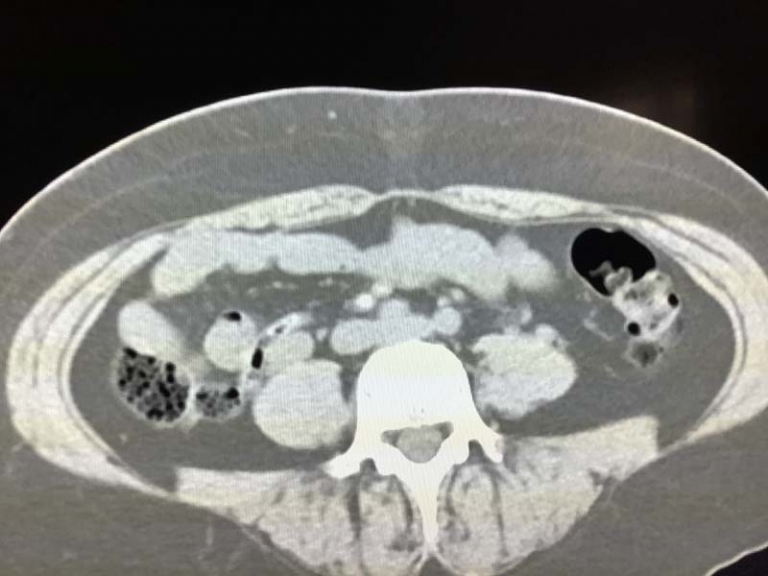Phleboliths In The Pelvis
Phleboliths are extremely common findings on X-rays and CT. These small calcifications are most commonly found in the pelvis. They are usually less than a centimeter. They look like small white spots or calcifications. They are important to distinguish from other calcifications in the pelvis such as passing kidneys stones. CT scan can help us distinguish phleboliths from other calcifications.
What are pelvic phleboliths?
These are small calcifications in the pelvis under a centimeter. They arise from small veins in the pelvis. Phleboliths form when small clots form in these veins and undergo hardening and calcification.
They are usually incidental findings. This means that they are discovered when patients are imaged for some other reason.
What do pelvic phleboliths look like?
They are usually small white spots or calcifications, most common in the pelvis. They are often rounded and can be clustered.
On X-ray, we can not tell for sure if they are phleboliths or other types of calcifications. The X-rays do not provide detail about the anatomy.
The advantage of CT is that it can tell us exactly where the calcification or phlebolith is located. We can differentiate phleboliths from other calcifications like kidney stones, fibroids, appendicoliths since we can see the anatomy directly.
We can not usually see phleboliths on MRI or nuclear medicine studies.
Phleboliths are usually not imaged with ultrasound. A phlebolith would typically look like a calcification with shadowing behind it.
Why do I have pelvic phleboliths?
They are thought to form when there is damage to the lining of the veins in the pelvis. This causes small clots to form which harden over time. This can occur from coughing and straining.
Are pelvic phleboliths dangerous?
No. They usually have no clinical relevance, meaning they can be ignored. They also do not require treatment in most cases.
Can pelvic phleboliths look like a passing kidney stone?
Yes. Pelvic phleboliths can look like kidney stones passing into the ureters. On X-ray, phleboliths can be distinguished from passing kidney stones by their appearance and location in many cases.
Phleboliths will sometimes have lucent or dark centers. CT can also help because they will tell us the exact location of the phlebolith in relation to the ureter.
A passing stone will also often show an obstructed kidney with a dilated collecting system.
A phlebolith does not obstruct the kidney because it forms in the small veins of the pelvis. A phlebolith can be located close to the ureter and be mistaken for a kidney stone in the ureter.
What else can pelvic phleboliths look like?
Phleboliths can also mimic other calcifications in some cases such as bladder stones. Usually bladder stones are larger. In difficult cases, an ultrasound or CT of the bladder can be performed.
Phleboliths can also mimic calcifications in the prostate. This does not matter in most cases because prostate calcifications are not usually treated. A prostate nodule or mass which contains calcifications will need to be further investigated for cancer.
Small calcifications can sometimes be seen in pelvic masses. The masses will not be seen on X-rays however, only the calcifications. Therefore tumor calcifications can sometimes be mistaken for benign phleboliths. Tumor calcifications will be more heterogeneous in size and appearance.
Small calcifications in the pelvis can sometimes be found in the appendix indicating an appendicolith. These can obstruct the appendix and cause appendicitis. Phleboliths in the right pelvis can mimic an appendicolith.
Some venous malformations can have multiple phleboliths. This is an abnormal development of veins where they are more tangled and larger than usual.
Uterine fibroids can have calcifications. These are classically described as pop corn calcifications which are larger than phleboliths.
Do phleboliths need to be treated?
No in most cases. These are benign and asymptomatic in most cases. If a patient is having pain in a vein with a phlebolith, sclerotherapy can be considered. The vein containing the phlebolith will be injected and shrunk.
Can phleboliths indicate cancer?
No. These are benign calcifications in small veins. Calcifications on an X-ray can however be seen in some tumors. Further imaging with CT will be more definitive.
I had them in the past but the radiologist did not mention this finding on my current exam?
These are so common and benign that some radiologists may not mention this as a finding. They usually don’t change over time.
Prior exams are helpful to confirm that calcifications are indeed phleboliths. Phleboliths will not change over time and remain constant in position and appearance.
Phleboliths in the pelvis: summary
Phleboliths are common findings in the pelvis. They look like small white spots or calcifications. They represent small hardened clots in veins. They do not pose a danger to health and do not require treatment in most cases. They can mimic a more serious diagnosis in some cases. This may require further testing with CT.

